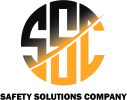Shareholder equity is not directly related to a company’s market capitalization. The latter is based on the current price of a stock, while paid-in capital is the sum of the equity that has been purchased at any price. That’s because a company has to pay for all the things it owns (assets) by either borrowing money (taking on liabilities) or taking it from investors (issuing shareholder equity). According to this formula, the values of assets, liabilities, and shareholders’ equity should be equal.
How to complete your balance sheet
Current liabilities can cover the current portion of the long-term debt that is due within the next 12 months, as well as the salaries paid to the employees. As a company owner, you must be well aware of the definition of the balance sheet and its equation, formula, and purpose. So, keep your eyeballs moving while reading each word and keep scrolling your screen. Overall, this statement provides a clear and standardized view of ABC Limited Liability Company’s financial position, and allows for easy comparison between the two years.
Current portion of long-term debt
Different accounting systems and ways of dealing with depreciation and inventories will also change the figures posted to a balance sheet. Because of this, managers have some ability to game the numbers to make them look more favorable. Pay attention to the balance sheet’s footnotes to determine which systems are being used in their accounting and to look out for any red flags. Retained earnings are the net earnings a company either reinvests in the business or uses to pay off debt. The remaining amount can be distributed to shareholders in the form of dividends. For mid-size companies, the internal accountant team can prepare the balance sheet and review it with the external accountant.
What Goes Under Equity on a Balance Sheet?
- Usually, in this format, the financial reporting is compared to two subsequent fiscal years.
- In their balance sheet as of 31 December 2022, Parkopedia reports tangible fixed assets valued at £81,914, which are depreciated over time.
- Glenn Broome is a Chartered Accountant with over 20 years of experience in auditing, financial accounting, and systems across the United Kingdom, and New Zealand.
- This amount is required to be reported as a result of the accounting standard requirement.
- Because one year is longer than the 4-month operating cycle, the distributor’s current assets includes its cash and assets that are expected to turn to cash within one year.
With a greater understanding of a balance sheet and how it is constructed, we can review some techniques used to analyze the information contained within a balance sheet. The current portion of longer-term borrowing, such as the latest interest payment on a 10-year loan, is also recorded as a current liability. Non-current assets are where the economic benefit will be realized over more than a year. They can refer to tangible assets, such as machinery, computers, buildings, and land.
Mergers, Acquisitions, and Their Effects on the Balance Sheet
For example, investors and creditors use it to evaluate the capital structure, liquidity, and solvency position of the business. On the basis of such evaluation, they anticipate the future performance of the company in terms of profitability and cash flows and make important economic decisions. The financial statement only captures the financial position of a company on a specific day. Looking at a single balance sheet by itself may make it difficult to https://sydneycitynews.com/how-to-choose-a-floor-covering-for-a-nursery.html determine whether a company is performing well.
Bonds payable are long-term debt securities issued by a corporation. Typically, bonds require the issuer to pay interest semi-annually (every six months) and the principal amount is to be repaid on the date that the bonds mature. It is common for bonds to mature (come due) years after the bonds were issued. When notes https://ladymosquito.ca/what-are-the-key-differences-between-gross-and-net-income/ payable appears as a long-term liability, it is reporting the amount of loan principal that will not be payable within one year of the balance sheet date. Long-term liabilities, which are also known as noncurrent liabilities, are obligations that are not due within one year of the balance sheet date. The current liability deferred revenues reports the amount of money a company received from a customer for future services or future shipments of goods.
This ratio is very helpful for investors and shareholders in deciding whether to raise money through debt or investment. The section on the left-hand side shows assets that are classified as current assets and other assets. It also shows less accumulated depreciation of $5,000 and less accumulated amortization of $200. Long-term liabilities, also known as non-current liabilities, are obligations or debts due after one year. They are useful for financing heavy investments like the purchase of buildings, equipment, or projects.
Limitations of Balance Sheets
One thing to note is that just like in the accounting equation, total assets equals total liabilities and equity. If you are preparing a balance sheet for one of your accounting homework problems and it doesn’t balance, something was input https://lit-info.ru/shop/book24/3-1/1789/100000001789001/anglijskij-yazyk-A-Z.htm incorrectly. You’ll have to go back through the trial balance and T-accounts to find the error. In this way, the balance sheet shows how the resources controlled by the business (assets) are financed by debt (liabilities) or shareholder investments (equity).
